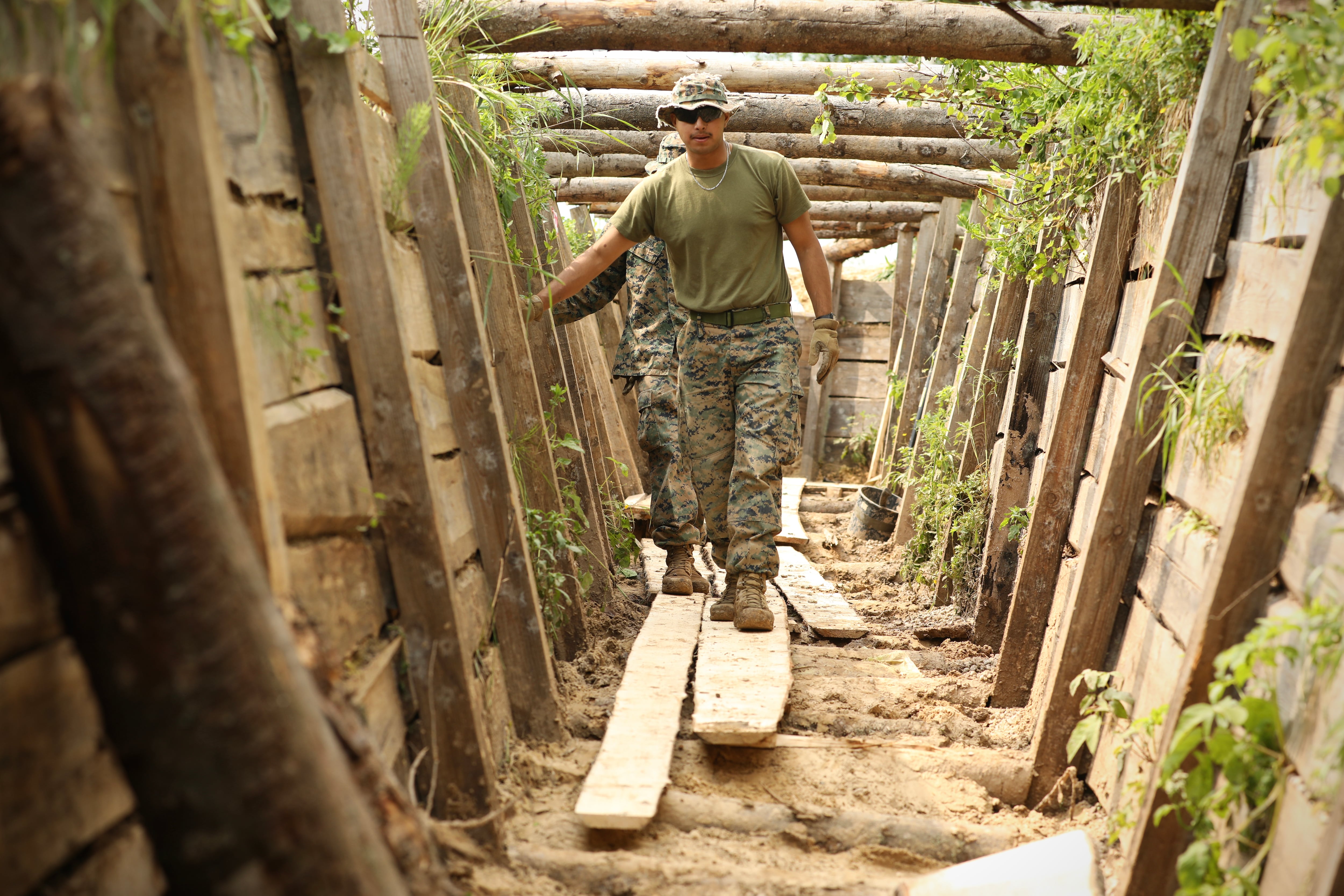United States Marines and sailors worked alongside Latvian Army troops recently to clear woods and build a warren of trenches for countering potential drone threats — both as practice for real-world deployments and to test new battlefield tactics.
Marines from the 8th Engineer Support Battalion and Seabees assigned to Naval Construction Battalion 14 performed trench-building and fortification activities in an exercise in Skrunda, Latvia, according to a Navy release.
“We are creating positions designed for modern combat environments,” Lt. j.g. Wiatt Lewis of Naval Construction Battalion 14 said in the release. “These field fortifications are built to reduce detection, limit exposure to unmanned systems, and enhance force protection across the battlespace.”
As part of the exercise, service members used lumber that was milled from the Latvian Army’s field-deployable sawmill to reinforce trench walls and piece together overhead sections that would provide the personnel with cover and concealment, according to the release.
Marine engineers worked with Seabees to build the structures, with the sailors providing expertise on horizontal construction while employing the use of bulldozers, graders and compactors to create a network of fighting positions in what the release called “dense Baltic soil.”
The training in western Latvia was part of the larger Baltic Operations exercise, or BALTOPS, an annual exercise in the Baltic region that focuses primarily on maritime and air warfare scenarios.

The war in Ukraine has continually proven how trenches, overhead cover and field fortifications are vital for protection against attacks from drones and various forms of precision fire, the release notes.
Drones have become a regular part of combat in the ongoing conflict, even culminating in major attacks such as Ukraine’s Operation Spiderweb in early June, a years-in-the-making mission that saw coordinated drone strikes launched deep within Russian territory on airfields and vital equipment.
Ukrainian forces deployed 117 drones, which were smuggled in container trucks into Russian territory, and struck 20 Russian military aircraft on the ground.
But small ground units must contend with drone threats as well. The quickly configurable aerial devices can spot troops for strikes and carry munitions to drop themselves.
“We have trained for this kind of work in the United States, but doing it here alongside the Seabees and our Latvian partners adds a different level of complexity,” Staff Sgt. Austin Leigh, combat engineer and platoon sergeant with 8th ESB, said in the release.
“We are always thinking about our visibility from above, the effects of thermal detection, and how to keep the position secure from multiple angles.”
Todd South has written about crime, courts, government and the military for multiple publications since 2004 and was named a 2014 Pulitzer finalist for a co-written project on witness intimidation. Todd is a Marine veteran of the Iraq War.





